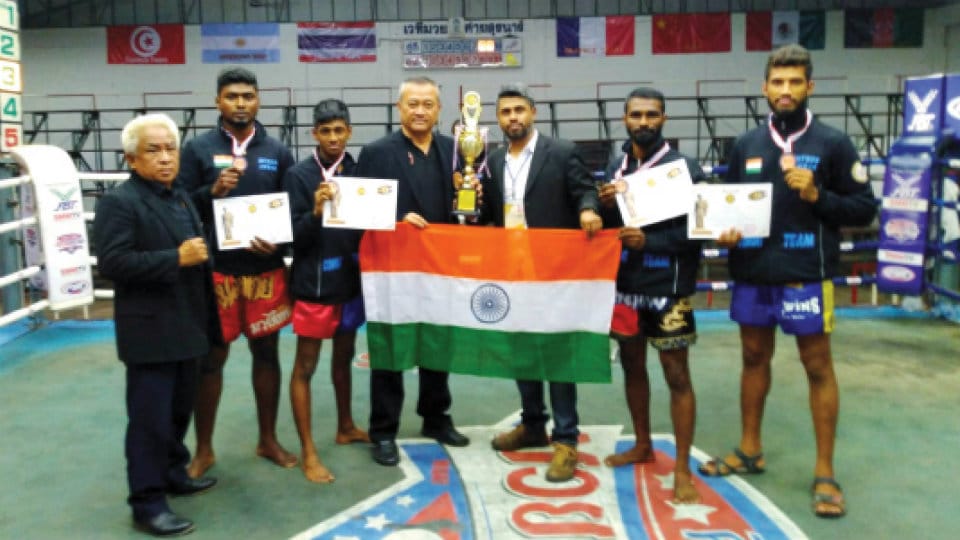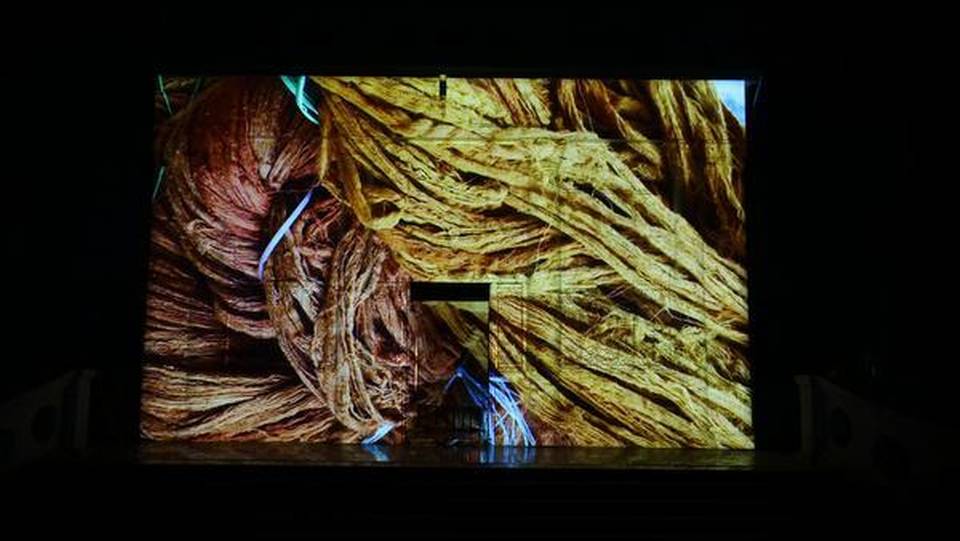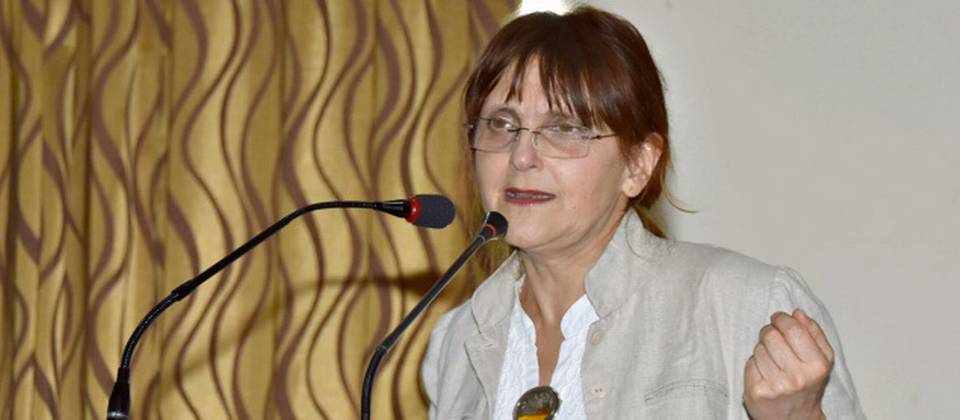My first tryst with theatre from Bangalore was when a young man called Pawan Kumar performed a solo piece called The Final Rehearsal at Thespo and won a bunch of awards. This was in 2002. Today, over 16 years later, Pawan Kumar is a celebrated Kannada film-maker and has just directed some episodes for a Netflix show. He did revive the play a couple of years ago; I believe it had a good run at Ranga Shankara in Bangalore.
Ranga Shankara was our gateway into Bangalore. We went there first in 2009, and in the decade since, we have been going there quite regularly. Some people suspect that I keep begging for dates so I can eat akki roti at Anju’s Café, a favourite haunt. But the venue, brainchild of Arundhati Nag, is delightful.
I had always imagined Arundhati Nag as an intimidating figure. A doyenne of the theatre. For whom Girish Karnad, another intimidating figure in my mind, wrote Broken Images (Bikhre Bimb). Then I met her, and she was warm, wonderful and supportive. And she recently acted in Bombay, in Q Theatre’s Mother Courage and Her Children. Another legendary, Arundhati (Raja), set up a venue called Jagriti in Whitefield in Bangalore, and attempted longer show runs, like in the West. We were among the first to do 21 shows on the trot there. An unforgettable experience. The Humming Tree is another cool experimental venue, but Ranga Shankara and Jagriti remain favourites.
Joining the list
At Jagriti, I formed a friendship with Vivek Madan, another mythical figure from Bangalore theatre. We had crossed paths, but we hadn’t really spent any time together (basically, we had never gone drinking) and that was soon remedied. Vivek, who had acted in the cult play Butter and Mashed Banana, joined the growing list of Bangalore exports to Bombay. He acted in The Hound of the Baskervilles, and was a revelation. Last month he returned with another play; when Quasar’s Thakore Padamsee directed him in a solo act called Every Brilliant Thing, which blew me away.
Vivek works closely with Abhishek Majumdar, regarded among the finest writer-directors today. Also from Bangalore, Abhishek’s productions have created waves across the country and, of late, internationally. Plays like The Djinns of Eidgah, Gasha, and Kaumudi are on all theatre aficionados’ lists.
Brave and brimming
Sandeep Shikhar, a frequent Majumdar collaborator and also from Bangalore, came to Bombay a few months ago and directed a play he wrote, Open Cast, for a local theatre group. He is a writer brimming over with ideas and a brave director.
The list of migrating/ visiting talent from Karnataka’s capital is quite endless. Anuja Ghosalkar, who worked with the India Foundation for the Arts, keeps visiting with plays produced by Drama Queen, her theatre group. Her form of documentary theatre is unique and riveting. M.D. Pallavi, singer and actor, knocked the socks off audiences across the country with her solo act C Sharp C Blunt. Gulshan Devaiah, now a popular film actor, began his acting career in Bangalore theatre. In fact, he featured in Butter and Mashed Banana. Nimi Ravindran and her company Sandbox Collective do very interesting work, including some popular plays for children. And this is just to name a few.
Besides all the influx from Bangalore (I’m suddenly wondering if I should have said Bengaluru all along, but I’m also saying Bombay, so I’ll just stay old school), the city, in my opinion, is a theatre hub second only to Bombay. I believe Delhi used to be a formidable competitor to Bombay, but Bangalore has left it far behind. At one point, of the 100-odd shows we had of a play, close to 40 were in Bangalore, maybe a touch higher than the number of shows we did in Bombay, where we are based. That to me spoke volumes about the growing theatre market and audiences over there. Also, a couple of my personal favourite productions hail from Bangalore, or have a strong connect. Kaumudi, written and directed by Abhishek Majumdar, which I mentioned earlier, is among the finest plays I have seen. How to Skin a Giraffe, a co-production between Perch from Chennai and Rafiki from Bangalore was brilliant. Both plays are hard to explain, and have to be watched, perhaps even repeatedly, to enjoy their brilliance. So let me wind up with some youth parlance. Bangalore FTW.
The theatre producer and director is often broke. To cope, he writes and directs films and web series and occasionally acts, albeit reluctantly.
source: http://www.thehindu.com / The Hindu / Home> Entertainment> Theatre / by Akarsh Khurana / April 06th, 2019









